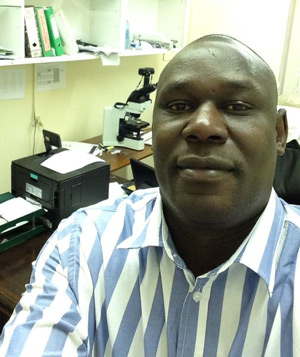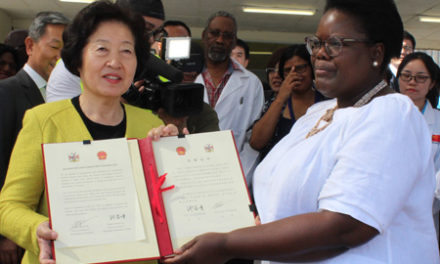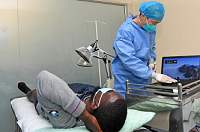
TB – the silent assassin

Look through the microscope: Dr Fredrick Kidaaga gives an insight on the silent killer TB that is often ignored as being just an ordinary cough.
The infection is often passed on from diseased individuals via coughed out droplets which harbour the slender rod like Mycobacteria tuberculosis organisms. When the droplets having these bacteria are inhaled by a potential victim, the unwanted visitors initially pitch camp in the lungs where they provoke the body to fight back.
Unchecked, the ensuing war is slow but sure, causing collateral damage to the airways with formation of scar tissue. The enemy is capable of punching holes in the lungs and the blood vessels there in, causing prolonged cough, coughing out blood, fevers, general unwell being with loss of appetite and loss of weight.
The bacteria then wantonly take a tour around the body via the lymphatic system (a system used by the body for cleaning up blood and other body fluids) and the blood stream steam itself. Along the way, the lymph glands in the lymphatic system which act as check points for trapping the enemy get enlarged.
The glands affected are usually those in the neck and chest cavity although others may also be involved. The favourite tourist destinations of the bacteria are the brain, kidney, bone, skin and reproductive organs.
In these areas, the bacteria cause complications. Rare forms of tuberculosis can be acquired through ingestion of milk contaminated by tuberculosis of cattle (bovine tuberculosis). This is when the milk is ingested in raw form or when not properly boiled.
But hold on, take a breath, because the bad guys normally do not win and there is light at the end of the tunnel. Tuberculosis can be detected and treated. A health worker will be capable of suspecting this infection according to the symptoms the patient presents with.
The laboratory is pivotal in diagnosing tuberculosis and this is in a number of ways like, analysing what the patient coughs out (sputum) for the organisms and also by examining a biopsy (small piece of tissue taken off by your Doctor) from diseased body parts like the lymph glands, lungs.
In these tissues, the organisms leave tell-tale foot prints which the Pathologist will be able to identify, by examining blood for changes caused by the organisms (All the above tests can be carried out at the Namibia Institute of Pathology, NIP and other laboratories with similar facilities).
There are several modern medicines for treating tuberculosis. Treatment is often lengthy but the earlier the treatment the better. Secondly, a vaccine against tuberculosis can be given at birth to prevent disease (this may not however stop infection if conducive factors for the organisms to cause disease are available in later life).
So – have you had a prolonged cough? Do not succumb to the silent assassin.











































